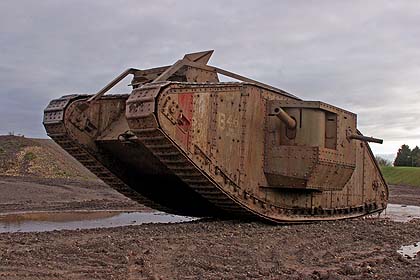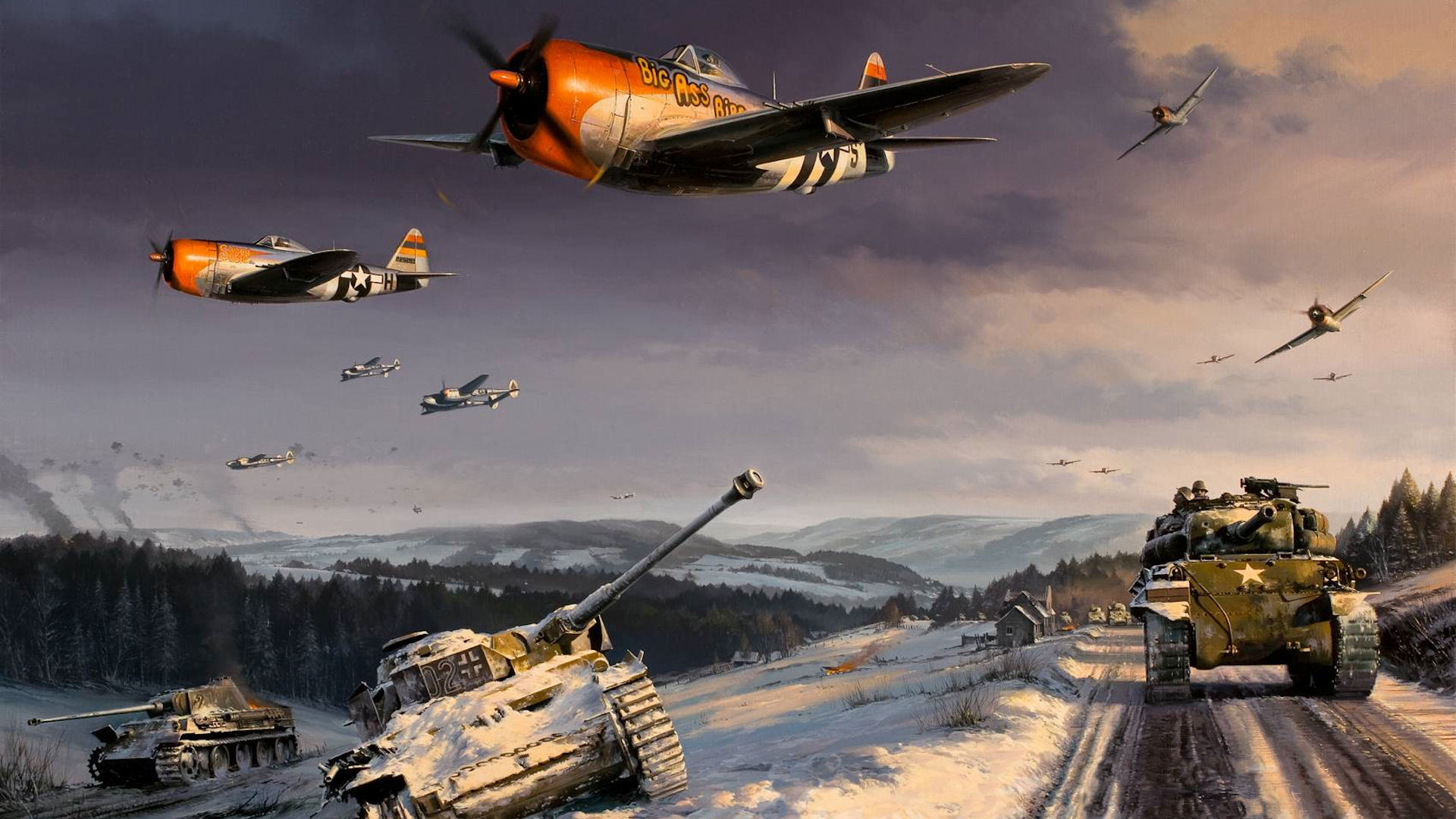

Operation Goodwood was a British offensive that was part of the Battle for Caen, one of the main inland targets that was part of Operation Overlord, the Allied invasion of Normandy. Sherman tanks carrying infantry wait for the order to advance at the start of Operation 'Goodwood', 18 July 1944. Thus, the momentum swung to the side of the Soviets, who eventually won the Battle of Kursk The Germans were unable to take Prokhorovka, and although it was not destroyed (the original goal of the Soviets), the II SS-Panzer Corps was exhausted, and prevented from continuing their offensive. German tank losses were smaller by comparison, up to 80 tanks and assault guns destroyed. The Soviets lost around 400 tanks, more than half of their force. The fighting was some of the most intense in the history of armored warfare. The battle saw over 600 Soviet tanks from the 5th Guards Tank Army smash head on into around 300 German tanks from the II SS-Panzer Corps. It was long thought to be the largest tank battle in history, but a ccording to the book Demolishing the Myth: The Tank Battle at Prokhorovka, Kursk, July 1943 by Valeriy Zamulin, a Russian military historian, that is not the case.īut that is not to say it was small or insignificant. The Battle of Prokhorovka took place during the larger Battle of Kursk. Panzer IIIs and IVs on the southern side of the Kursk salient at the start of Operation Citadel, July 1943. With the Americans launching Operation Torch in November 1942, the tide against the Germans began to turn in North Africa. Five hundred German and Italian tanks, almost all of Rommel's force, were destroyed or captured. Rommel commanded a force of 116,000 German and Italian soldiers, and 540 tanks.Īfter days of hard fighting in the Egyptian desert, Montgomery was victorious. Montgomery assembled a force for a counterattack, including around 190,000 men and over 1,000 tanks. They were stopped at the First Battle of El Alamein, which, though technically a stalemate, did prevent the Afrikakorps from rolling through the rest of Egypt, and by extension the Middle East. Germany's Afrikakorps had to step in to prevent their defeat in 1941, and were able to push the British all the way into Egypt. North Africa had been a battleground since Fascist Italy's invasion of Egypt in 1940.

The Second Battle of El Alamein saw two legendary generals, Britain's Bernard Montgomery, and Germany's Erwin Rommel - who was nicknamed the "Desert Fox" - fight for the fate of North Africa. While the French SOMUA S35 tank was considered as one of the best at the time, German tactics and communication technology made the Wehrmacht better.Ī mine explodes close to a British artillery tractor as it advances through enemy minefields and wire to the new front line, October 1942. German losses were much lighter, with only around 50 tanks lost. Some of the French First Army was able to fight their way through the Germans to reunite with their British comrades at Dunkirk, but they had lost well over 100 of their tanks and armored vehicles. Over 600 German tanks and 25,000 soldiers squared off against 600 French and Dutch armored vehicles and around 20,000 soldiers. It was both the largest tank battle of the campaign, and the largest battle in armored warfare history at the time. It was part of the Wehrmacht's thrust into the Ardennes region, and was meant to tie down the French First Army. The Battle of Hannut was fought during the Battle of Belgium, Nazi Germany's invasion of the Low Countries. Two destroyed French SOMUA S35s and an artillery piece being inspected by German soldiers, May, 1940. The German Army launched a massive counterattack, and brutal trench warfare ensued.īy the end of the battle, almost all the British gains were lost, over 100 tanks were lost or destroyed, and both sides suffered around 40,000 casualties each. The British had torn through four miles of German defenses and captured up to 7,500 prisoners with low casualties.īut by the end of the day, more than half of the tanks were out of action due to mechanical failure.

The initial attack on November 20th was met with huge success. Nineteen British divisions were assembled for the battle, including 476 tanks and five horsed cavalry divisions. The objective was to take the commune of Cambrai, an important supply point for the Germans at the heart of the Hindenburg Line, in order to reduce the pressure on the French. The Battle of Cambrai was the first time tanks were used on a large scale for a military offensive. It often indicates a user profile.Ī Mark IV (Male) tank of 'H' Battalion, 'Hyacinth', ditched in a German trench while supporting 1st Battalion, Leicestershire Regiment near Ribecourt during the Battle of Cambrai, 20 November 1917. Account icon An icon in the shape of a person's head and shoulders.


 0 kommentar(er)
0 kommentar(er)
